From a Small Fishing Town to a Modern Coastal City
by Zhang Yuwen
[Peru] HO YU KIT YI
San Juan de Marcona, lying between the Pacific Ocean and the Nazca Desert on the southwest coast of Peru, was once a small fishing town. Its development into a modern city with a growing economy began with a Chinese company bringing in investment two decades ago.
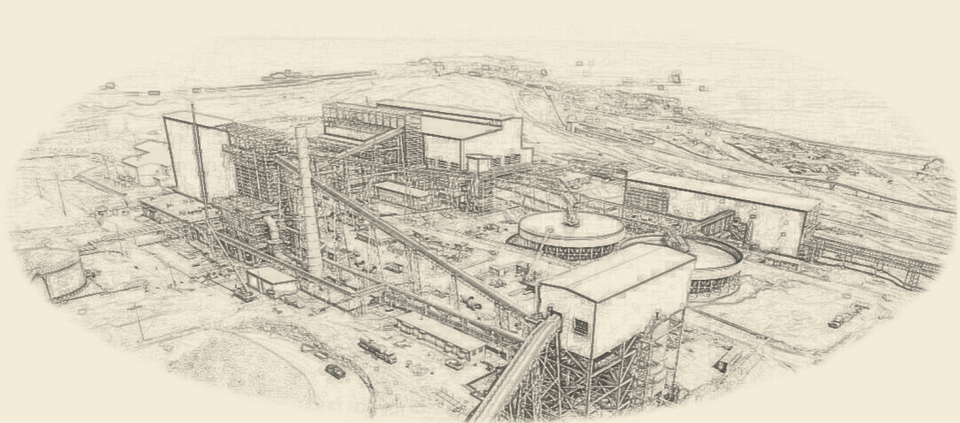
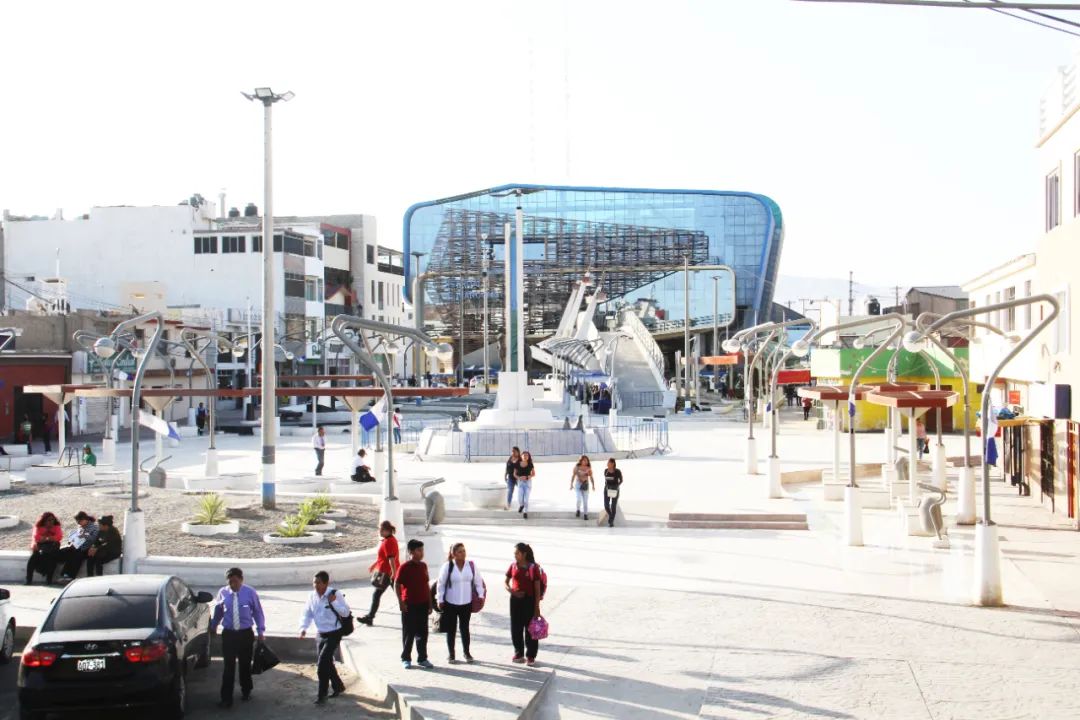
The central square of San Juan de Marcona
Rebirth of the Local Iron Ore Industry
For a long time, San Juan de Marcona remained a small port. The dozens of fishing families residing here eked out a precarious living between the sea and the desert. While the area, located on the western side of the northern stretch of the Andes Mountains, was rich in iron ores, the locals did not know about this hidden treasure.
In 1953, a North American mining company began prospecting here. But in 1975, the iron mines were nationalized by the Peruvian Government. By the 1990s, the state-owned mining company was heavily in debt and on the verge of bankruptcy. As most of the people in the area worked for the mining company, they faced a severe livelihood challenge.
To boost the economy and employment, the government decided to sell the company through international auction. China's Shougang Group won the bid and renamed the acquired company Shougang Hierro Peru S.A.A.
It was the start of the small port's leapfrog development.
Fernando Sabayunus is an engineer who has been with Shougang Hierro Peru for 40 years. The first thing in Sabayunus' morning routine is to check the mining pit. He still finds the sight of the excavators, drilling rigs and mining trucks lined up at the mine incredible.
Before the Chinese investment, the local mining industry was at the end of its tether. The large mining equipment was in a bad state, and there were only six mining trucks and just one production line. The state-owned company had a debt of more than USD40 million. "Now we have dozens of large equipment in continuous operation and the mining scale has doubled. What a remarkable change!" Sabayunus said.
In 2007, Shougang Hierro Peru started to remodel the old mining site and plan new facilities to expand its production capacity, use resources more efficiently, and improve its competitiveness. The remodeling was completed in 2013 and the expansion in 2018.
Peru's then Energy and Mines Minister Francisco Ismodes conveyed President Martin Vizcarra's congratulations to Shougang Hierro Peru, saying the president praised the project in his State of the Union speech. After the new facilities began operation, the company's annual production capacity exceeded 20 million tons while annual output of iron ore concentrates reached 18 million tons. Shougang Hierro Peru had a higher added value of products, higher profitability, and a higher ability to defuse risks.
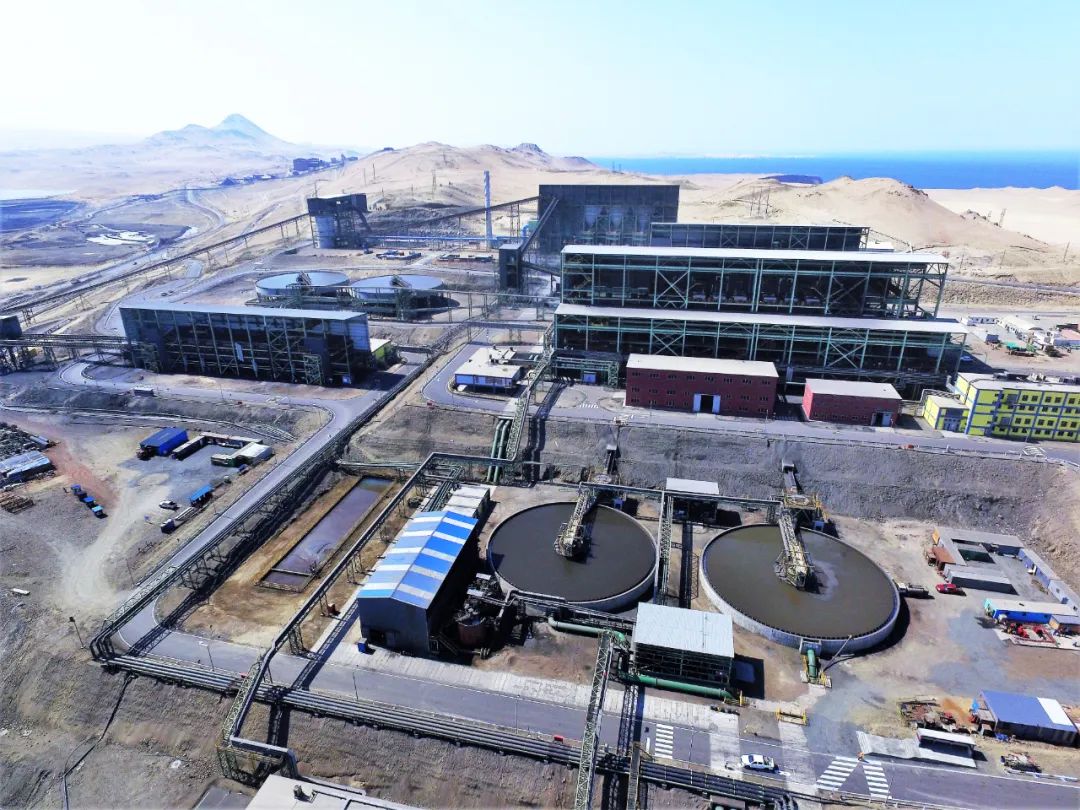
Shougang Hierro Peru's ore dressing plant, completed in July 2018
From Small Port to Local Economic Driver
Carlos Perez is a retired senior employee of Shougang Hierro. As he shows his photographs of the town, two images present a stark contrast. One is of Marcona in the 1990s, when there were a few sprawling bungalows with few people. When this photo was taken, the mining company was on the verge of bankruptcy. A large number of its employees had been laid off in batches and were struggling to find a living. Marcona, which was reliant on the mining company, faced a hard time. Many people left the town to seek jobs in other cities.
The other photo is of the newly-built City Hall of Marcona. After the Shougang Group acquired the mining company in 1992, its employees' income increased. They were also given free housing with free water and power supply. Jobs at the company are considered hot and it is a matter of pride for the locals to have their children working at Shougang Hierro Peru after graduation. Perez's two grandsons are working at Shougang after graduating from college.
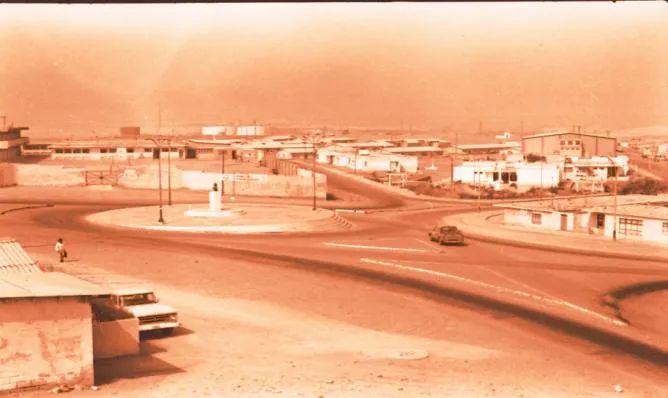
San Juan de Marcona in the 1990s
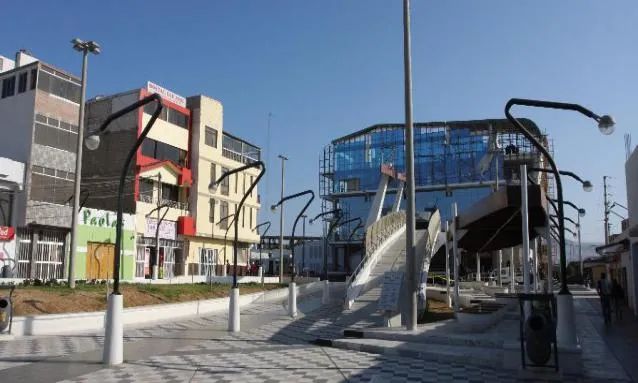
The newly-built City Hall of San Juan de Marcona
In 2014, Shougang Hierro started its expansion project and hired nearly 4,000 construction workers at the peak. The project brought huge business opportunities to Marcona and attracted labor from other cities. Local hotels, restaurants, groceries and barbershops thrived as never before.
Perez's elder son closed the business he had been running for years in Ica, the provincial capital, and returned to Marcona to start a hotel. It is the busiest hotel in Marcona today, and the biggest one by number of rooms. The restaurant on its top floor does brisk business every day and Perez often comes in to help out in the hotel. "I thought I would have a leisurely life after retirement. I never expected I would have to help my son with his business," he said. "In the past, the children of my co-workers and neighbors mostly went to the big cities for jobs. But now many people come from Lima, Arequipa and Cuzco to find jobs or run businesses here. What a dramatic change!"
Then he pointed at the new photo and smiled. "In the past, we had no pavements or smooth traffic," he said. "It was all mud near the beach. Now, most roads are paved, stretching all the way to the beach. All houses have fresh water and electricity. In the entire Ica region, no other city has such a beautiful city hall as ours."
Shougang Hierro Peru has become a major tax and profit contributor in the Ica region, and its donations to Marcona's public works have been increasing. The once small coastal city looks different today with its economic prosperity.
Over the years, Shougang Hierro has been funding education, medical care and poverty alleviation programs. It has donated new equipment to local schools and helped renovate their campuses. It has donated ambulances and medical equipment to local hospitals. It also supports local agriculture and handicrafts. In addition, the company provides free training in carpentry, masonry, electric welding, makeup, hairdressing and other vocational skills, and has funded a local ceramic factory.
The police cars, fire trucks, ambulances, street sprinklers and garbage trucks donated by Shougang Hierro Peru can be seen in Marcona, Ica, and the entire province of Nazca. Shougang's support has propelled local social and economic development.
Today, new investment is pouring in from other mining companies, including Minera Shouxin Peru S.A., Marcobre S.A.C. and Jinzhao Mining Peru S.A. Well-known Chinese companies serving Shougang Hierro, such as China Communications Construction, Beijing Shougang Mine Construction Engineering Co. Ltd. and CITIC Heavy Industries Co. Ltd., have set up offices in Marcona. The city has become an important mining hub in southern Peru, helped by its natural deep-water harbor, advantageous geographical location and developed infrastructure. The Peruvian Government has identified Marcona as a sea port for the Pacific-Atlantic Highway and the proposed Pacific-Atlantic Railway connecting Peru's Pacific coast to Brazil's Atlantic shores. There is a plan to develop a petrochemical industry zone in Marcona to make the city an economic driver for central and southern Peru.

A sanitation vehicle donated by Shougang Hierro Peru to the Marcona Municipal Government
On a Green and Sustainable Development Path
Since mining causes pollution, Shougang Hierro Peru has been taking measures to address environmental problems from its inception. It has invested tens of million dollars to build a tailing pond and a sewage treatment plant. These facilities ended Marcona's practice of discharging tailings and sewage directly into the sea, and have improved the environment around the iron mines.
A 10-minute drive to the north along the San Juan Bay leads to the sewage treatment plant, a USD3-million investment by Shougang Hierro. At the plant, Peruvian engineer Jesus Monge pointed at a sterilizer. "This is the only UV sterilizer in Peru, imported from Canada," he said. "After repeated sedimentation and filtration, the sewage undergoes UV sterilization and then becomes safe to be discharged into the sea."
The tailing pond helps reduce ocean pollution and ensure full and efficient resource utilization. Minera Shouxin Peru S.A., a joint venture of Shougang Hierro Peru and Baiyin Nonferrous Group Co. Ltd. of China, launched the first tailing reclamation project in Peru to recover valuable metals such as copper, zinc and iron from the tailings discharged by Shougang. At the commencement ceremony for the start of operation, then Peru's Energy and Mines Minister Cayetana Aljovin praised the project as "an exemplar for the reclamation of tailings in Peru's mining industry".
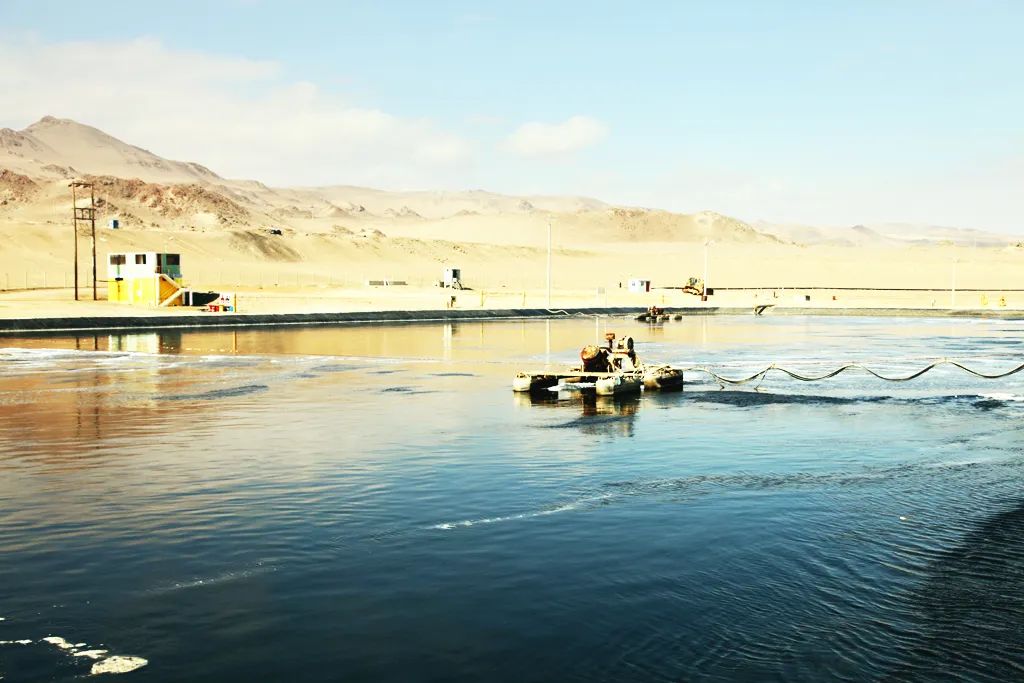
Shougang Hierro Peru's sewage treatment plant
Juan Matamoros, an engineer who joined the project at an early stage of construction, is now deputy manager of Minera Shouxin Peru's environment department. Matamoros says he is proud to work for the company. "Through the Belt and Road cooperation, China has brought new technologies and projects to Peru. The tailing pond is one of them," he said. "It has enabled full utilization of our mineral resources, created more jobs, contributed more taxes, and increased our incomes."
Shougang Hierro Peru is located between the San Juan de Marcona National Nature Reserve and San Fernando National Nature Reserve. Both are home to a large number of seals, penguins and other birds. They are a proof of the harmonious coexistence of humanity and nature, as well as the green and sustainable development of Shougang Hierro.
The main part of Shougang Hierro Peru's logo is a hummingbird in Nazca lines, the landmark geoglyphs found in the Nazca Desert. It stands for the company's commitment to contribute to win-win cooperation between China and Peru.
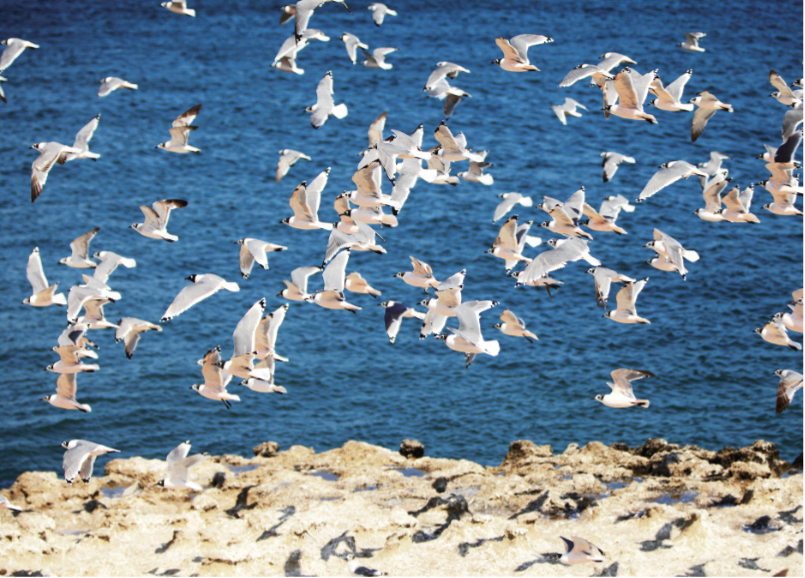
The San Juan de Marcona National Nature Reserve
FOR MORE
Project Overview:
Shougang Hierro Peru S.A.A. is a subsidiary of Chinese Shougang Group, formed through acquisition of Peru's state-owned iron ore mining company. Shougang's enormous investment saved the local mines from bankruptcy and helped them upgrade equipment and facilities and resume production. According to Peru's National Institute of Statistics and Information, in 2018 the average monthly income in Peru was about PEN2,500 (USD690), while Shougang Hierro's employees earned more than double that.
Shougang Hierro Peru has become a major tax and profit contributor to the local economy. By 2018, it had paid USD1.53 billion in taxes to the Peruvian Government, procured USD1.4 billion worth of local goods and services, and created 4,500 direct and indirect jobs.


